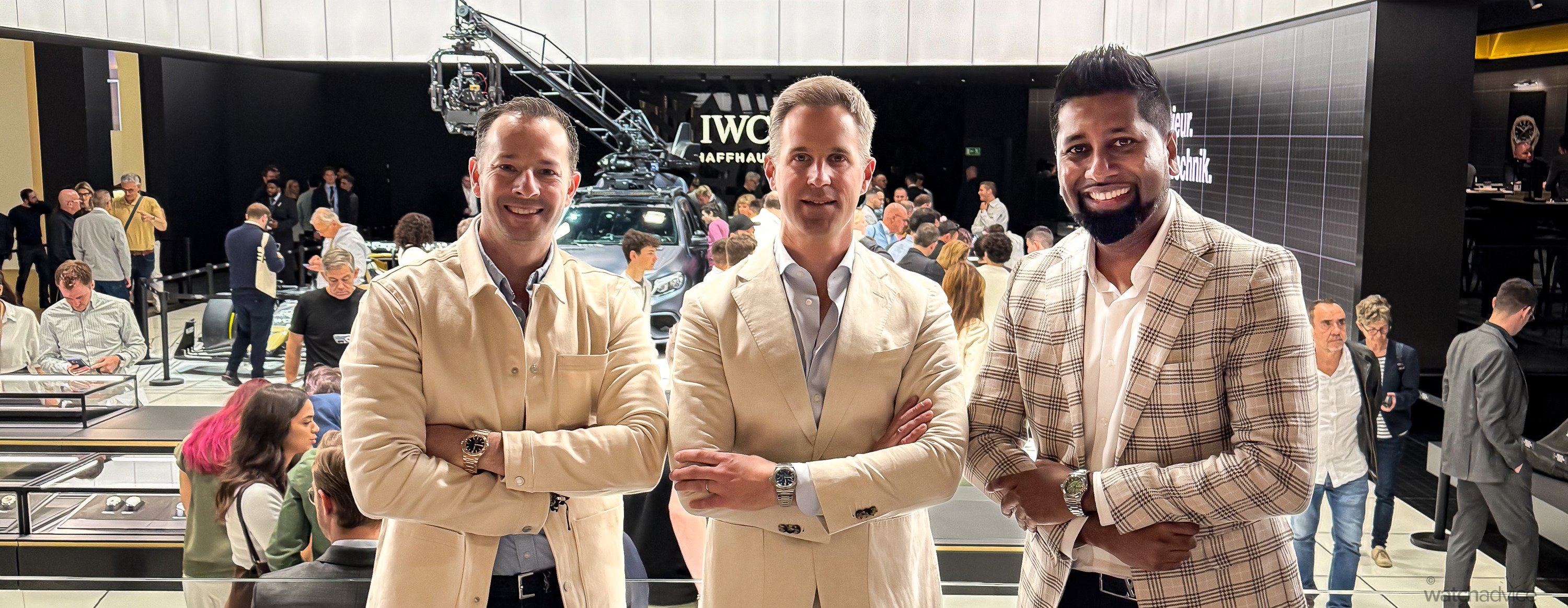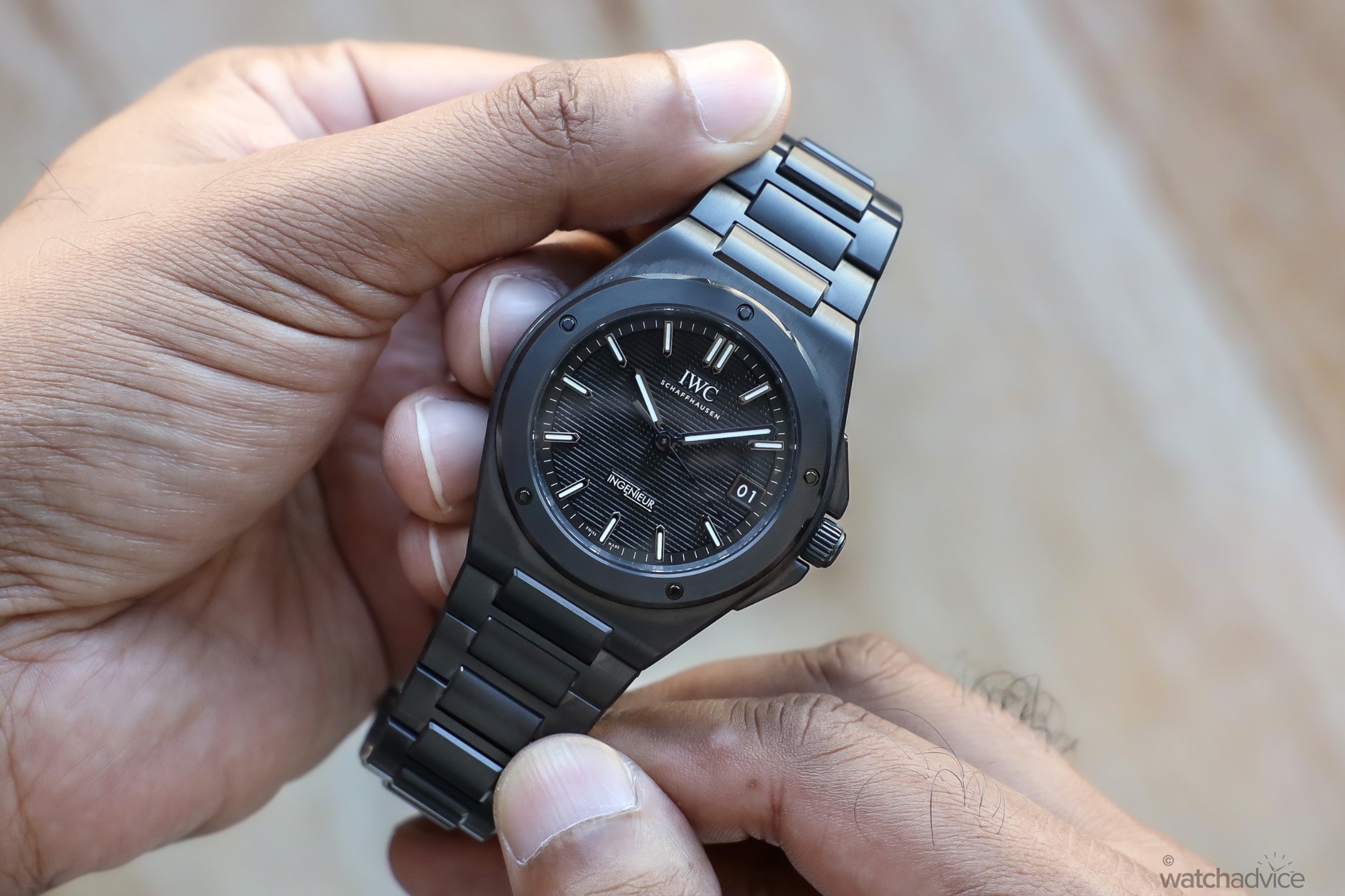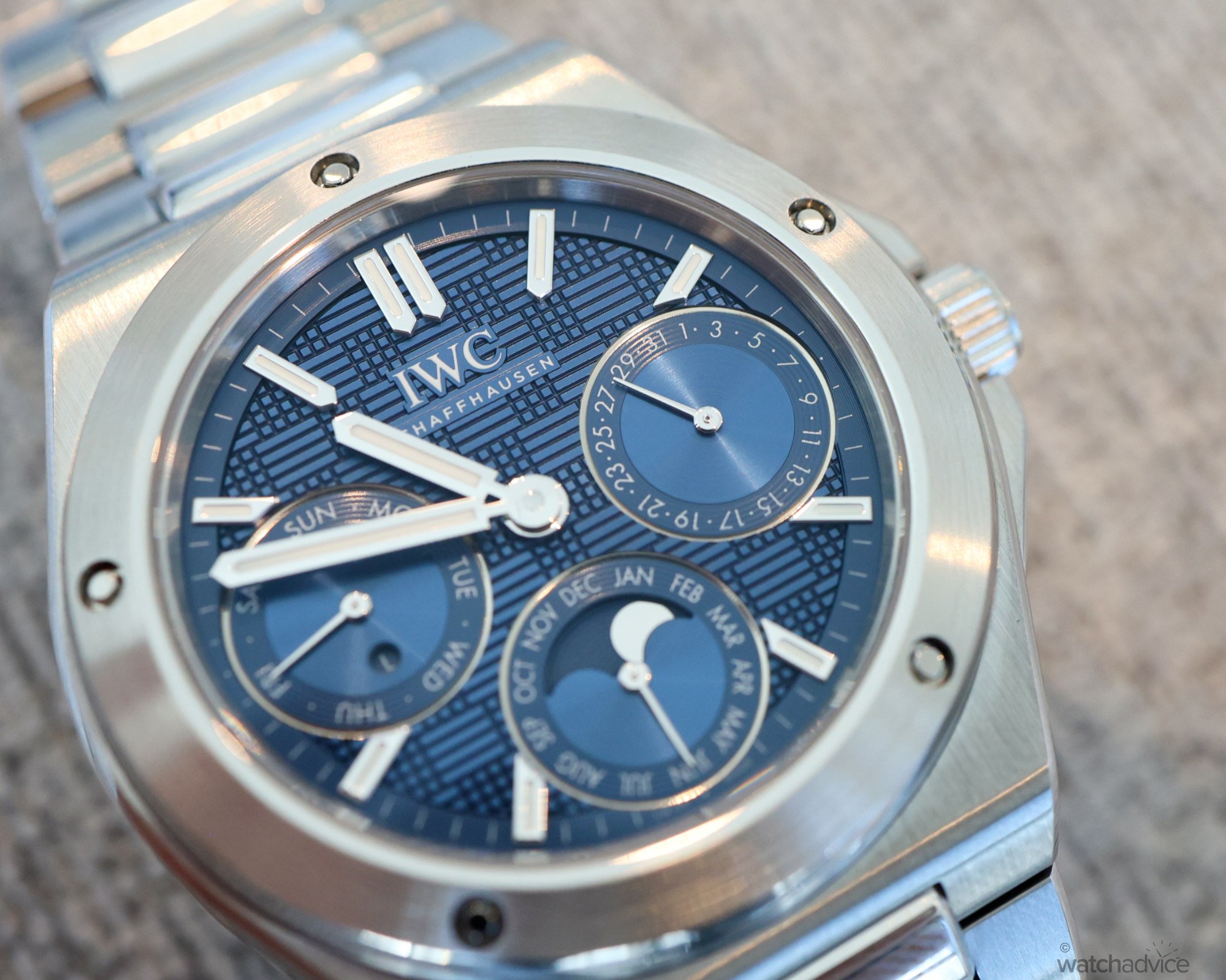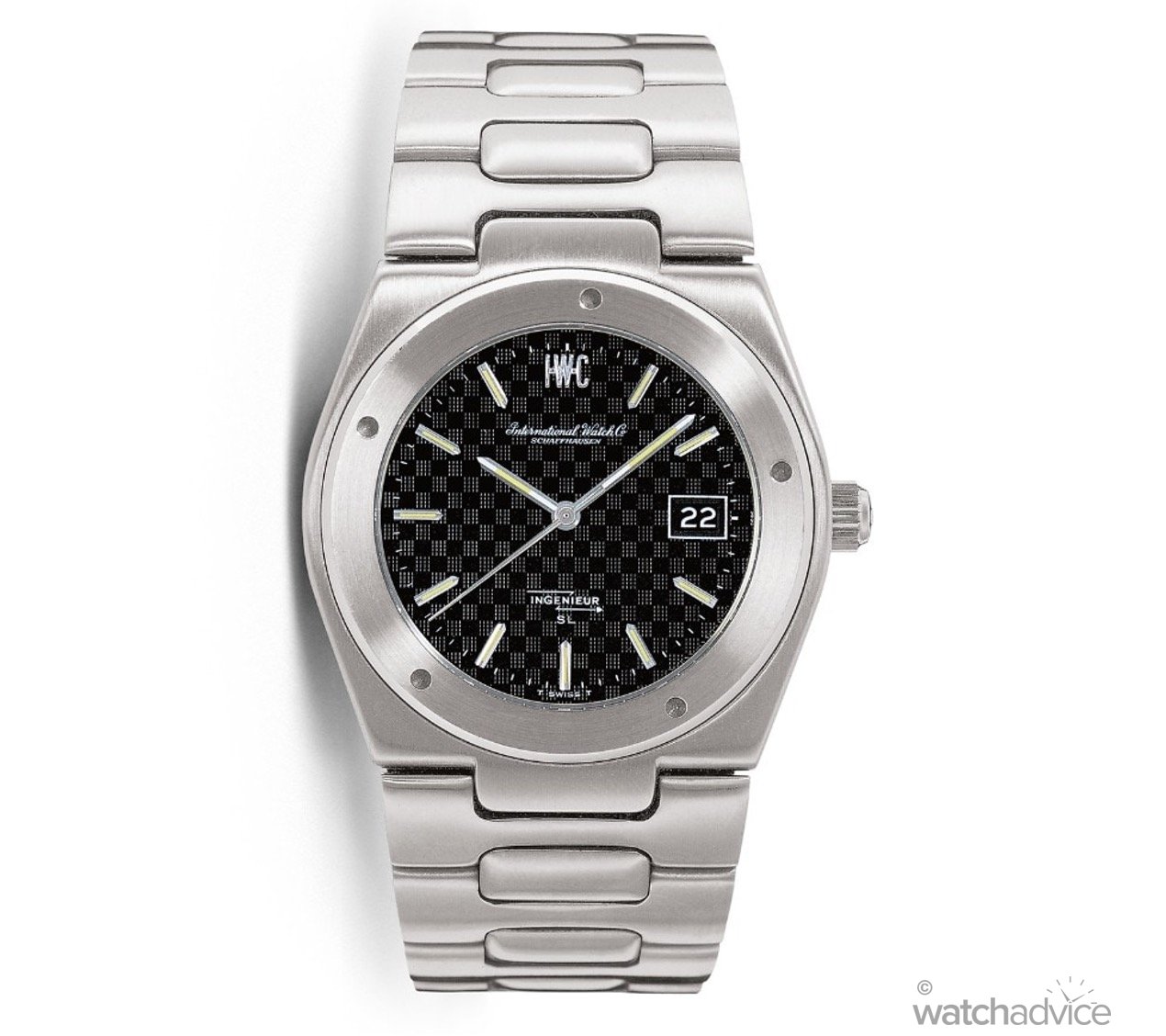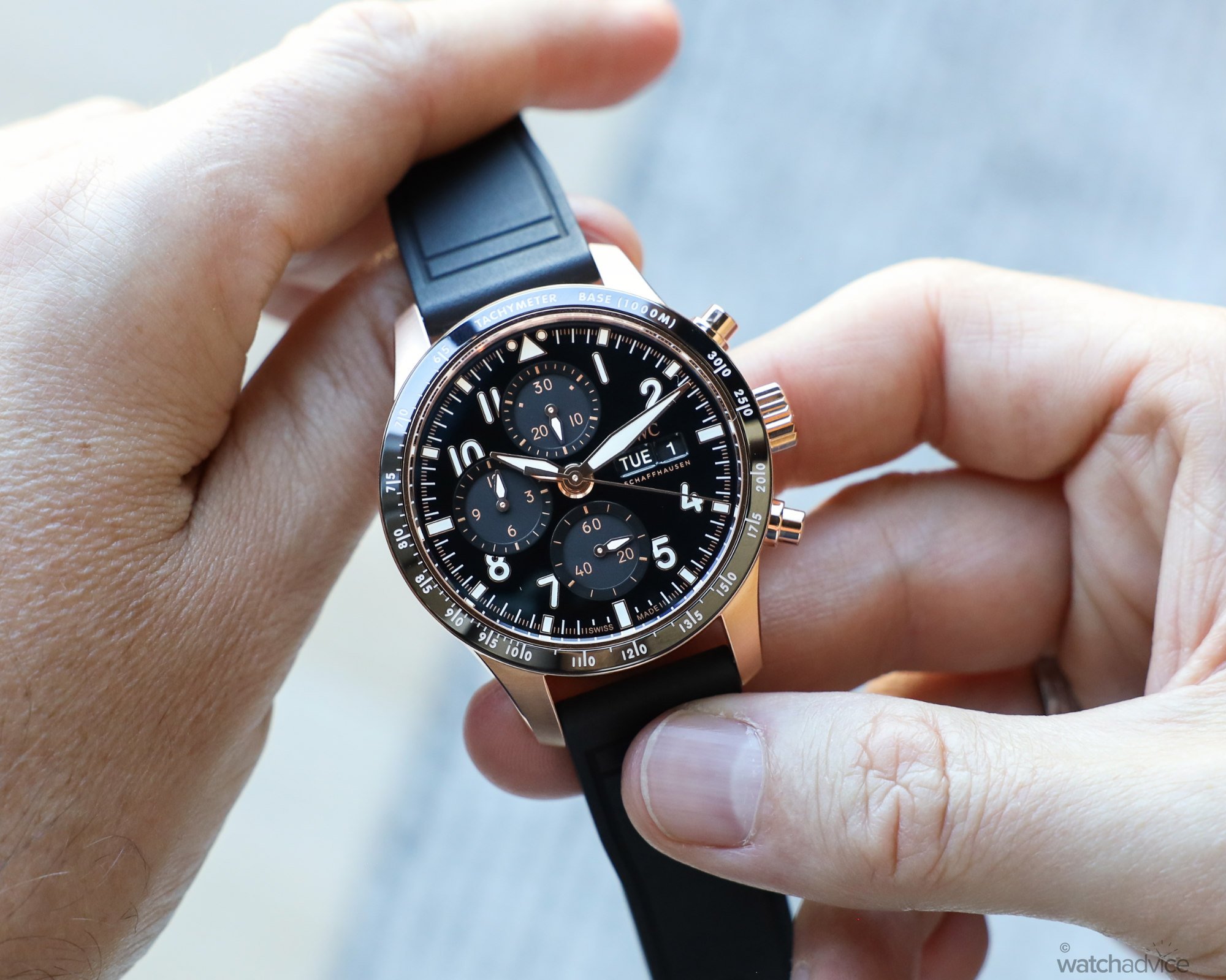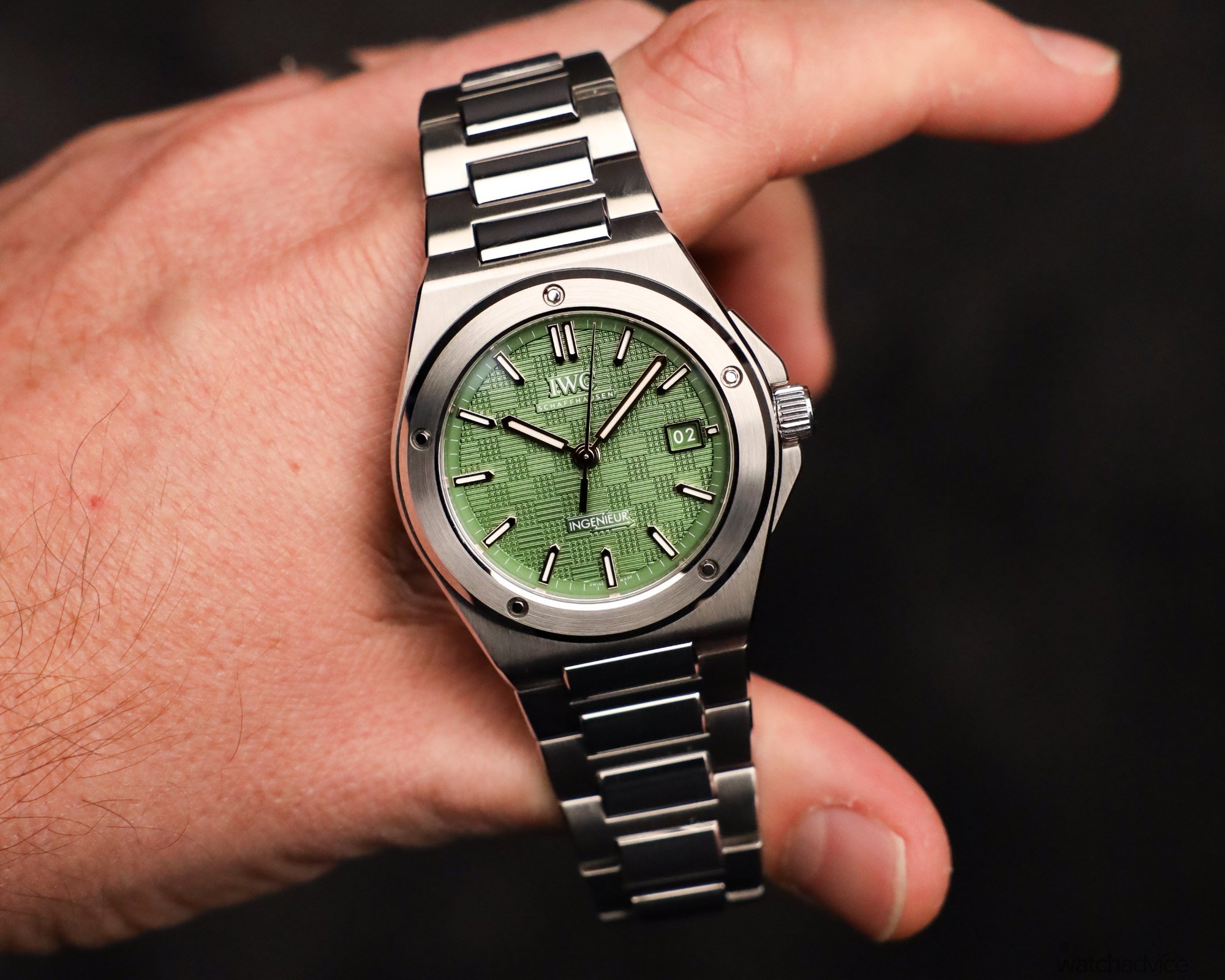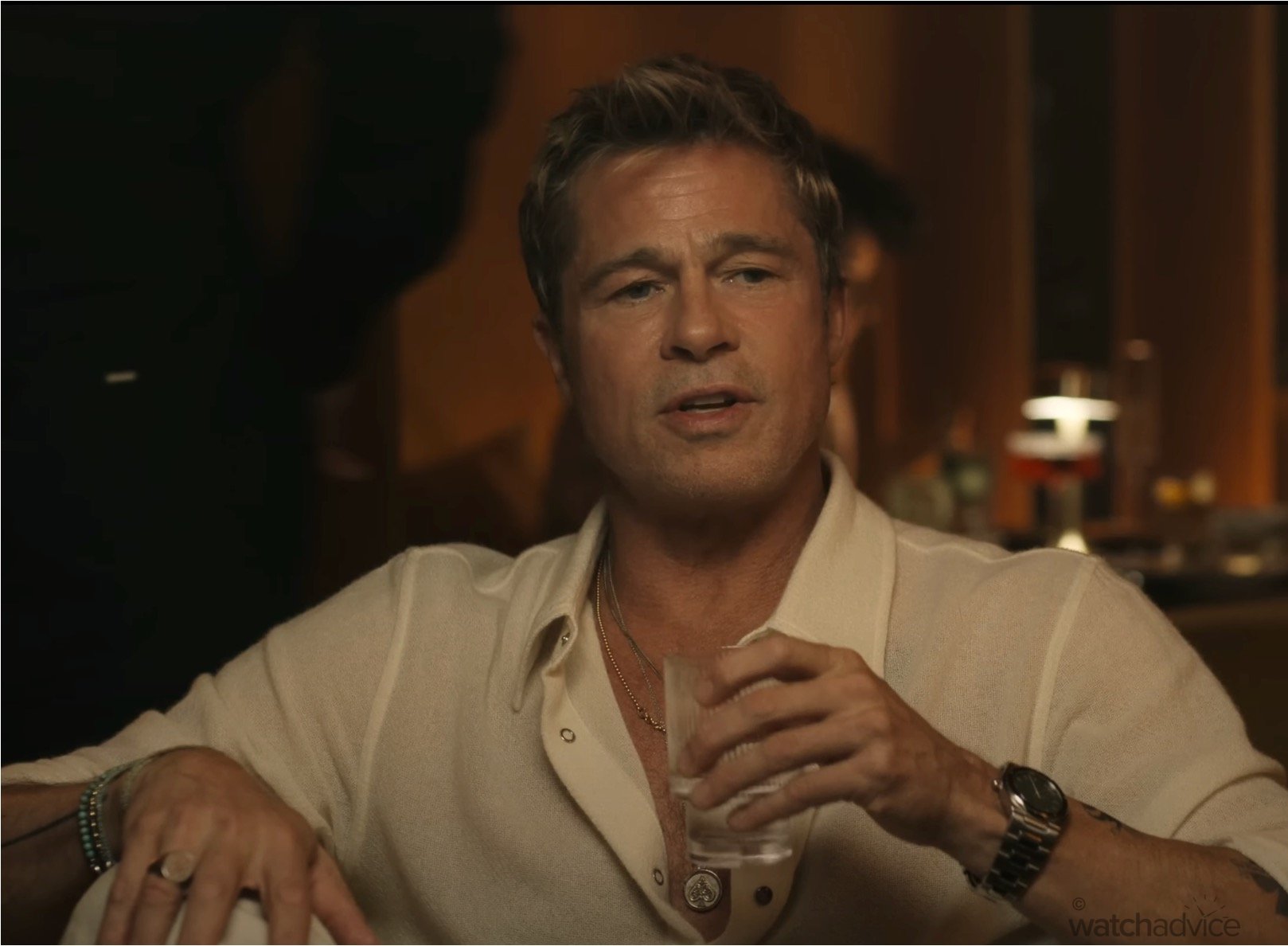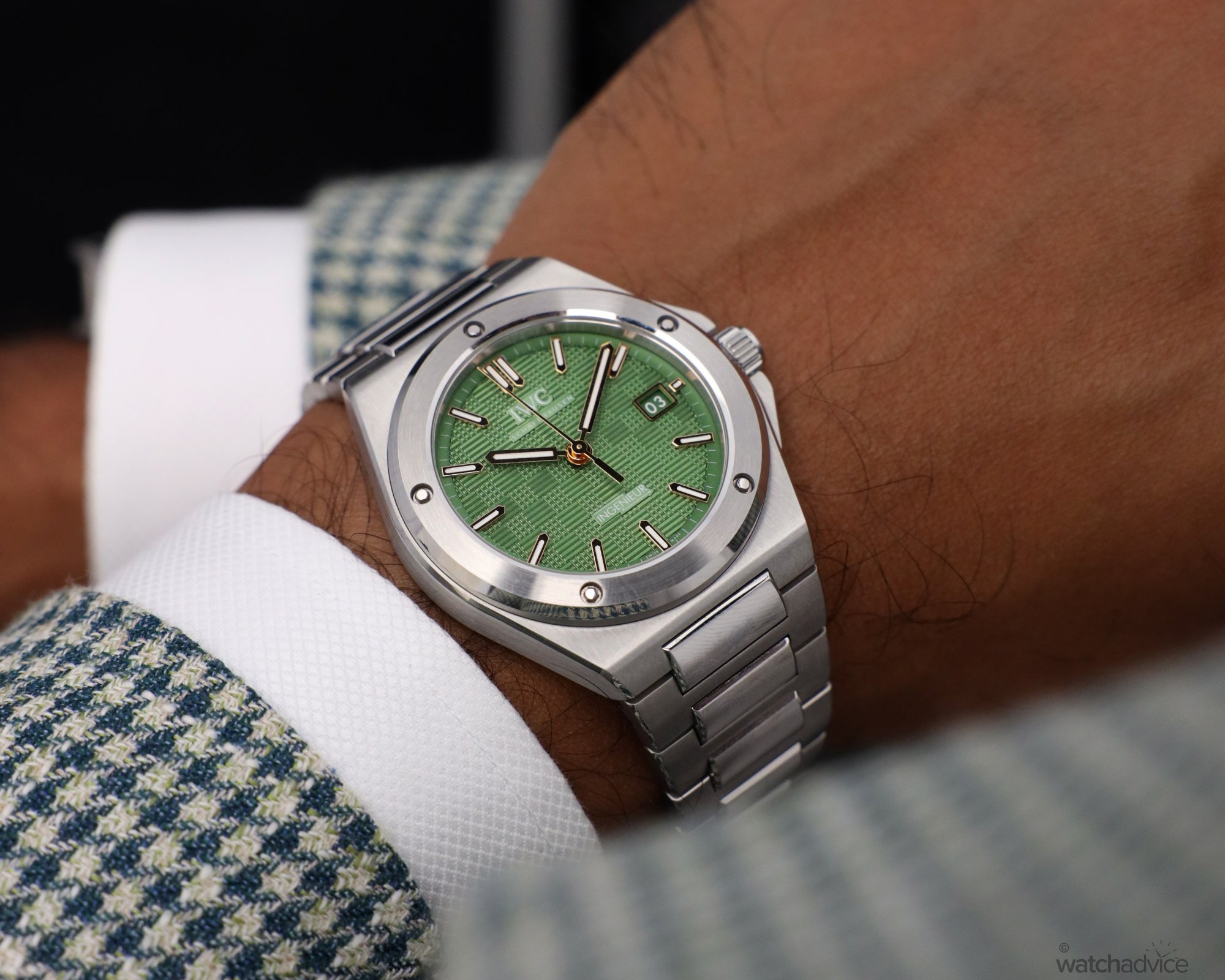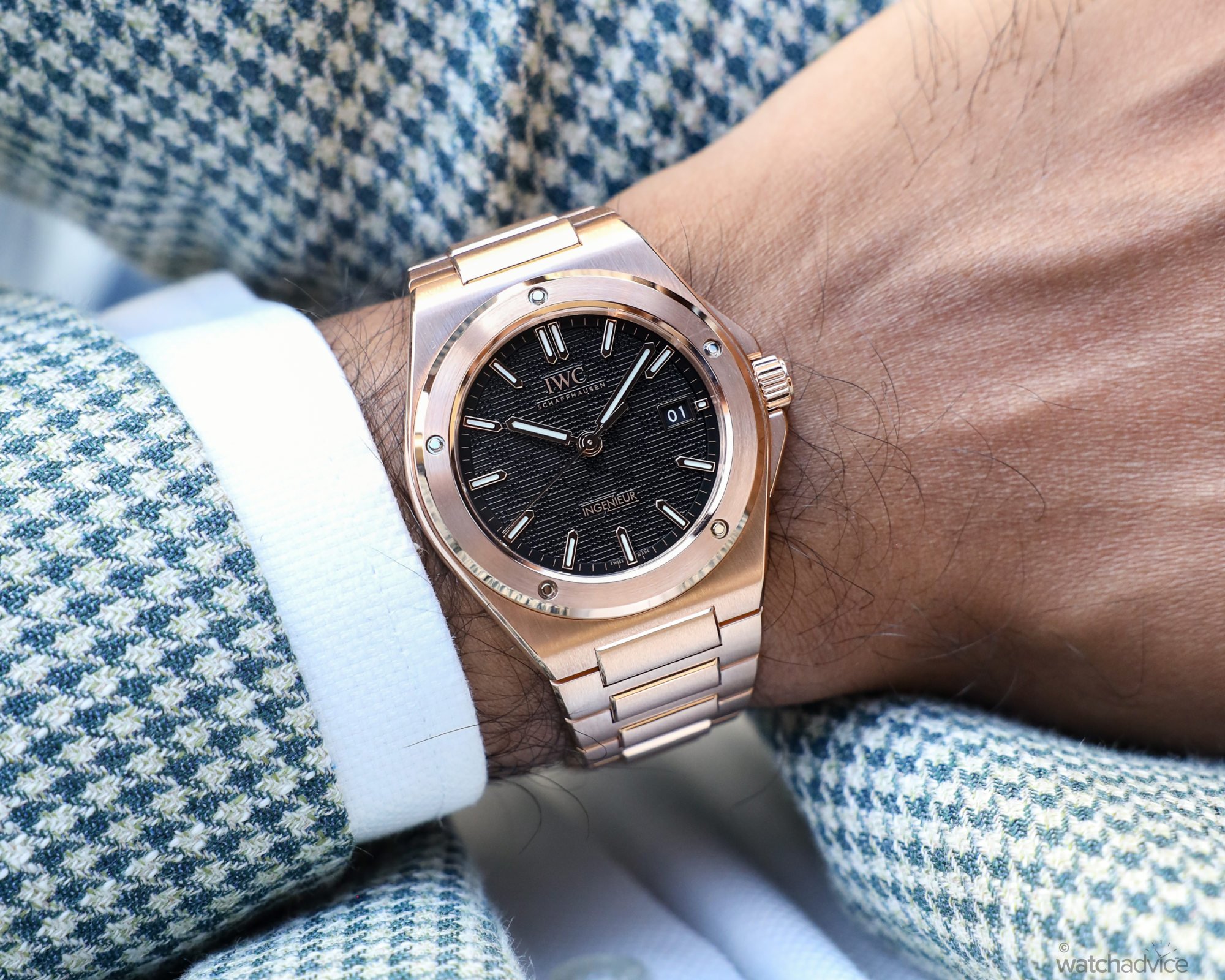We caught up with IWC Schaffhausen’s CEO, Chris Grainger-Herr, and spoke to him about this year’s Ingenieur releases, overcoming challenges, making movies and how he thinks about watches as an enthusiast himself.
This year, IWC Schaffhausen’s focus was on the Ingenieur range. After reinvigorating the collection a couple of years ago, this year the brand sought to build on the collection that has had a lot of success since its relaunch in 2023. So we were excited to be able to sit down with Chris Grainger-Herr, CEO of IWC Schaffhausen, to talk about something deeply personal: building on the legacy of the revived Ingenieur collection.
The revival of the Ingenieur in 2023 was a much-talked-about topic at that year’s Watches & Wonders. For most, the release was bringing back a legendary watch, and as Chris and those from IWC say, their and Gerald Genta’s most brilliant failure. Not anymore, however. In 2023, the Ingenieur was a major success, and this year, they’ve taken this further with new sizes, more materials such as rose gold and ceramic, and of course, bringing in a new Ingenieur Perpetual Calendar that we think everyone loved.
And not only is IWC’s focus on the Ingenieur but also on the recently released F1® The Movie starring Brad Pitt. IWC has been partnered with the Mercedes-AMG Petronas F1® team now for over a decade, so it made sense for them to partner alongside the fictional team and characters in what many are calling the most “real” F1® movie ever, having much of the filming being done at actual F1® races last year alongside the real drivers and cars. This was the backdrop and theme of this year’s booth for IWC at Watches & Wonders and the backdrop to our conversation with Chris, one of the watch world’s most personable and down-to-earth leaders…
An Engineering Brand
Now, we can’t talk about IWC without talking a little bit about the heritage, Chris’ vision for the brand and of course, the Manufacture in Schaffhausen itself, which we visited last year. If you’ve not read it, then be sure to check it out after this.
“Well, you have to come back since we reintroduced high watchmaking to this facility. Now, when you come to the assembly area where you used to see the line assembly for our main movements, just in front of that, we have our 22 colleagues who work on higher watchmaking, on PPC+ (IWC’s Perpetual Calendar projects), so it looks like there’s a lot more in terms of watchmaking content now. Obviously, winning the GPHG last year with the Eternal Calendar was the crowning achievement for the Perpetual Studio concept of bringing high watchmaking into the manufacturer.”
Expanding on this, we talked to Chris about our experience at the Manufacture, and how welcoming it is. The design when you walk in, the layout, and how it is as a building he helped design and opened in 2018 was very impressive – designed for watch enthusiasts who want to get an insight into Swiss watchmaking and not only this, designed for those who work there as well, to make them feel a part of the brand that has its roots in engineering.

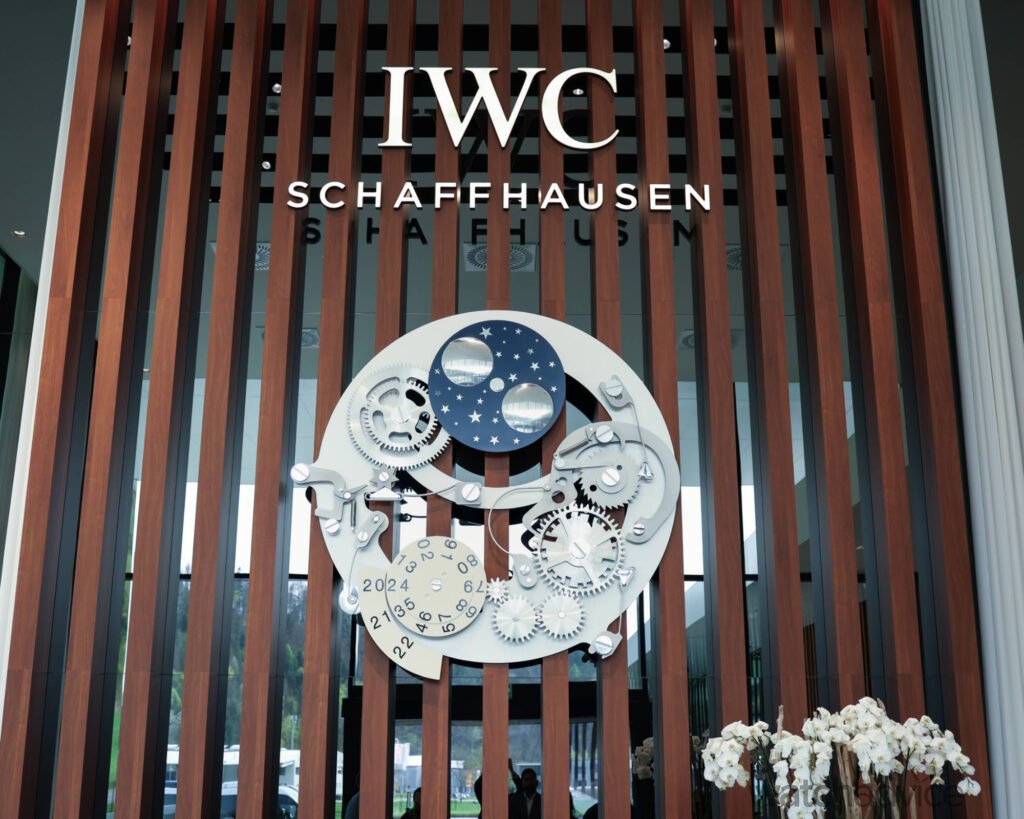
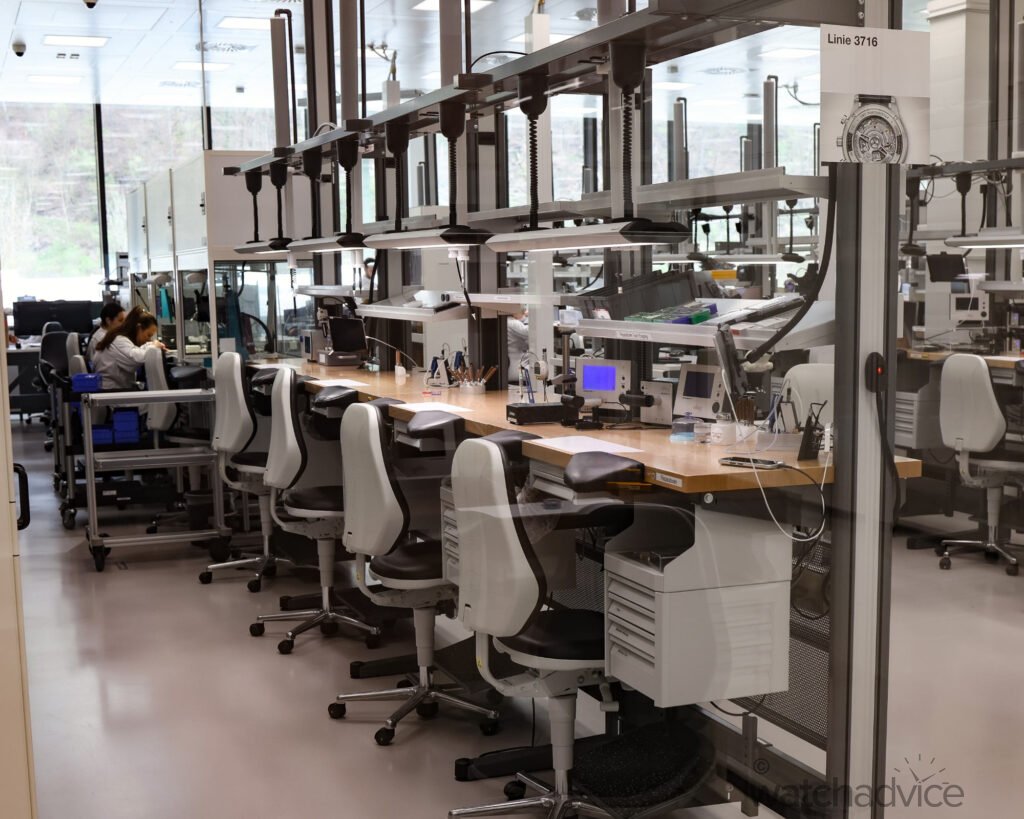
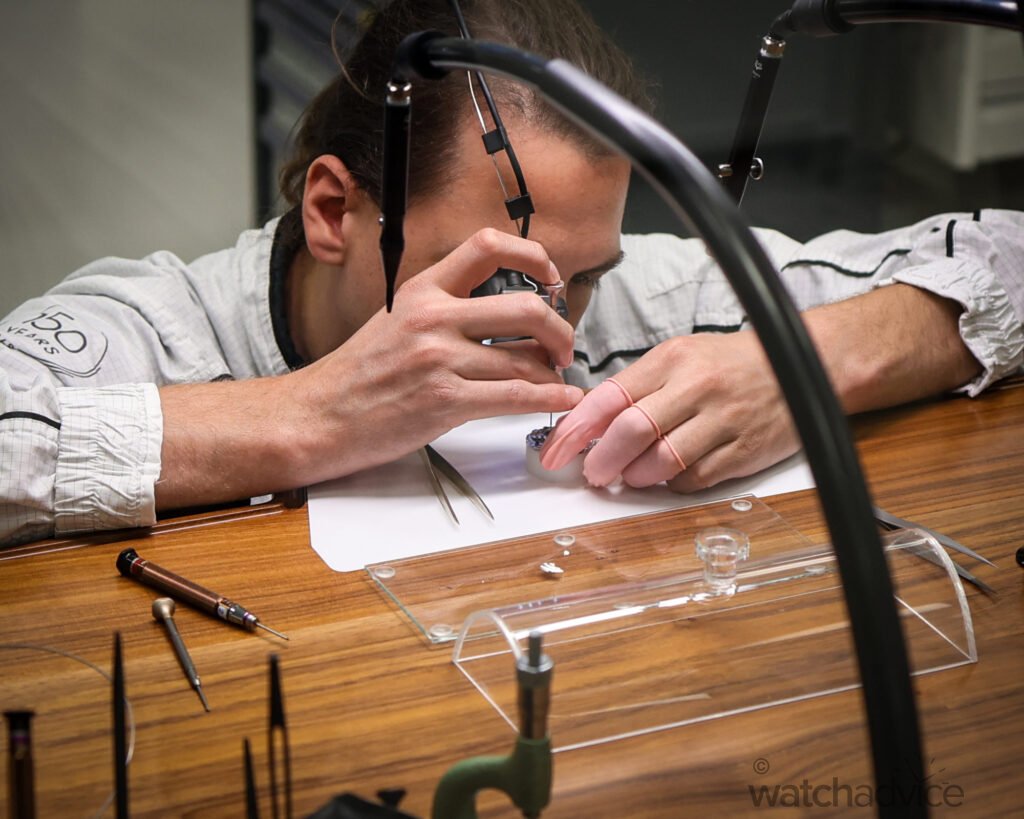
“It’s always the idea – to do something that works both at the factory as a brand statement, that gives our watchmakers and engineers the right feel for the brand as well, because it’s all about how you feel when you create and when you make. Our colleagues are there daily, and we want to convey a certain feeling. Sort of in between that lab character, and the residential space, and then we wanted that expo pavilion feeling as well, like world expos back in the 1930s. They always were about countries showcasing the best in their art and their engineering, their industrial heritage, and their inventions and latest innovations. I thought that’s quite a fitting frame for this, in-between engineering and art that we do in watchmaking. I think people love working there. I love being there, I love showing people what we do, and it’s been really a huge step change in the way that we can innovate and manufacture.”
And speaking of the manufacture and engineering, we couldn’t help but briefly bring up the success that IWC has had in the last 12 months or so, with the introduction of the new Portugieser collection last year, which included the GPHG-winning Portugieser Eternal Calendar, which broke a Guinness World Record and then took the Aiguille D’Or at GPHG 2024. But the question on our minds is, how does IWC, and Chris himself, marry the two worlds of the classical vs the modern, Portugieser vs the Ingenieur?
“When you think about last year with the Portugieser, this was really about brand equity, building around the idea of watch-making capability and that love for detail, whereas this year you have a much more accessible focus point I would say. We can see this with the main Pilot’s and Ingenieur collections; we have many more steel models, many more automatic models, and models below 10,000 CHF. You then have a bit broader campaign focus, and last year with the Eternal Calendar and astrophysicist, Brian Cox, you know, it’s all quite elevated. And now, when we talk about F1® The Movie and Brad Pitt racing cars on the big screen globally, it’s a lot more of an accessible message, and I would say that we can play to a lot broader market than maybe what an Eternal Calendar can. We try to alternate year after year to get a little bit of a blend of these messages. It’s about finding the right sort of blend.”
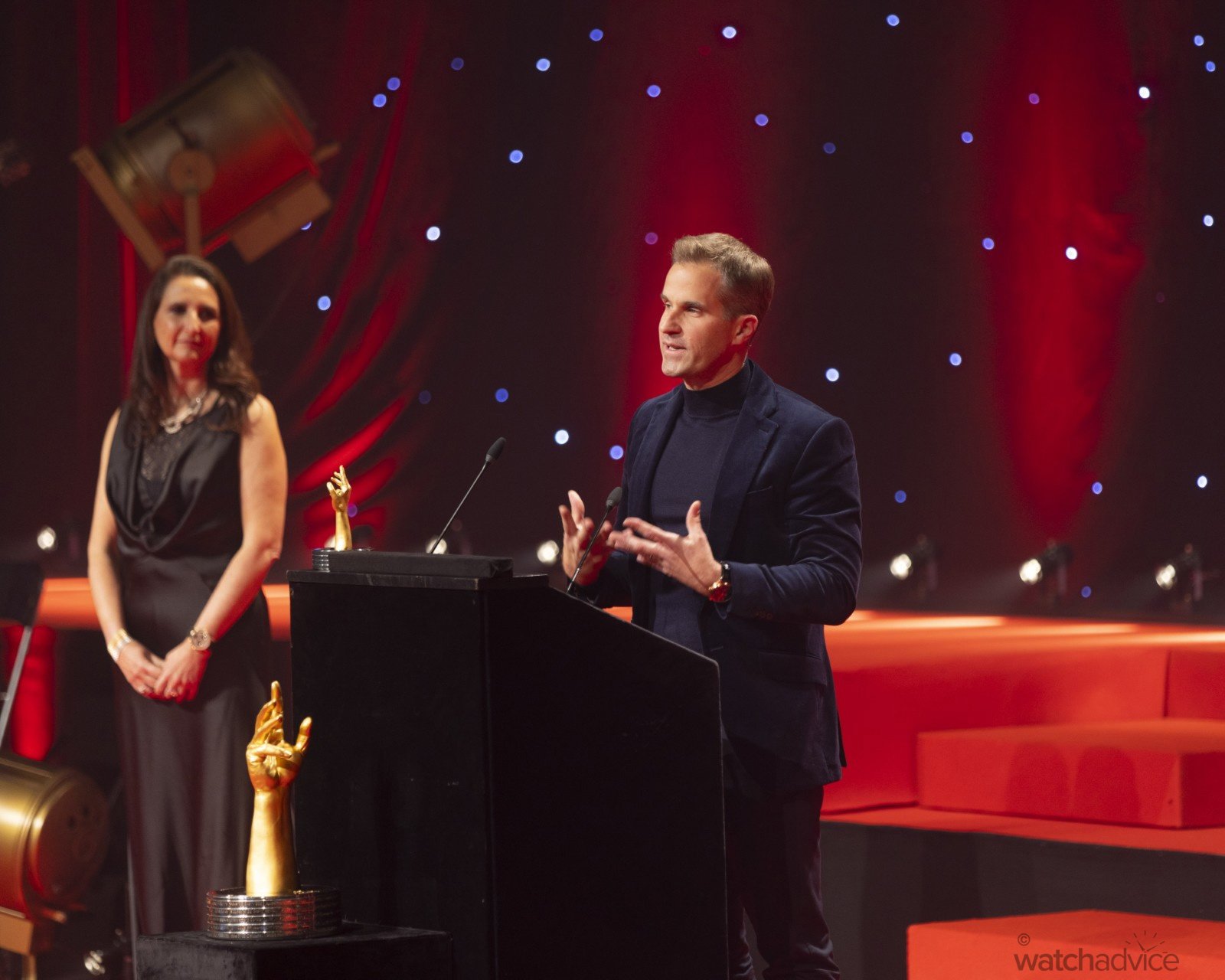
Elevating & Growing The Ingenieur Collection
This takes us to the new Ingenieur collection that is laid out in front of us. From the new Rose Gold models, to the new 35mm sized variants, the black ceramic 42mm model and the very good-looking Perpetual Calendar. In all honesty, these are all great additions to the collection, and these make the Ingenieur collection a very well-rounded one in IWC’s stable.
“When we launched the Ingenieur in 2023, it was a huge step, because the Ingenieur had been sort of off the radar for IWC for quite some time. We had different iterations over the years. And I really wanted to bring it back to where we felt we had the right blend between that original Genta DNA and also a modern wearable sports watch – One that brings the dimensions down, that is a good, wearable 40 millimetres that doesn’t wear too thick either.”
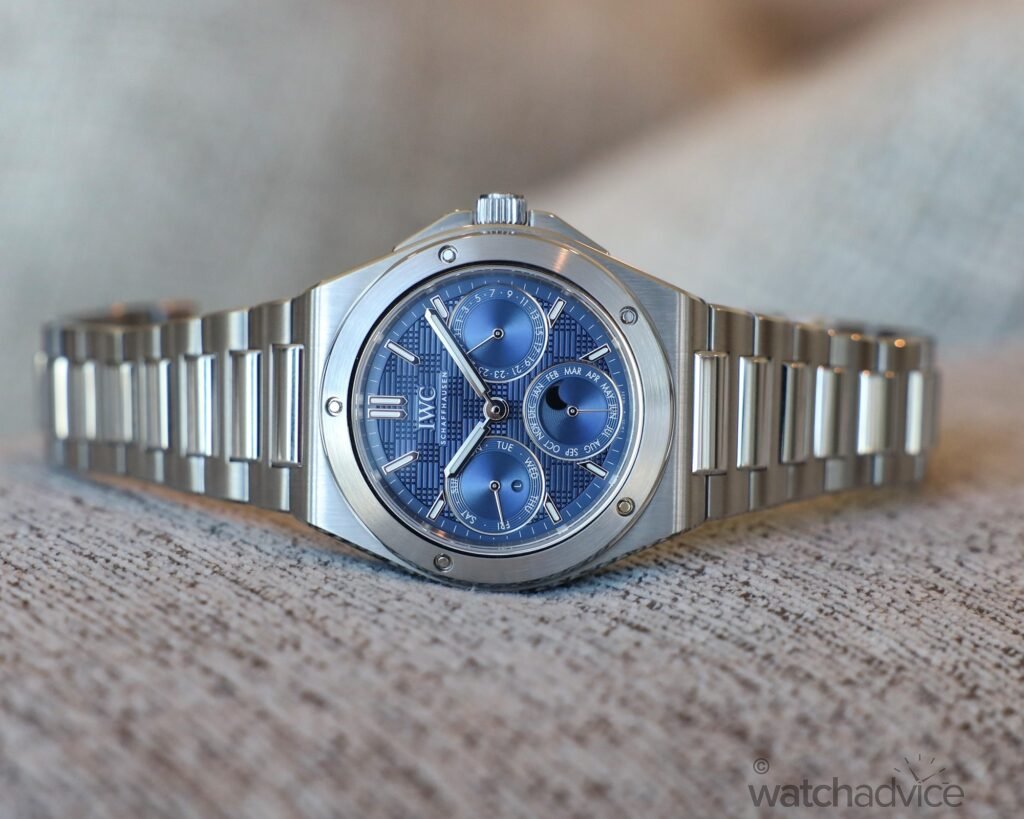
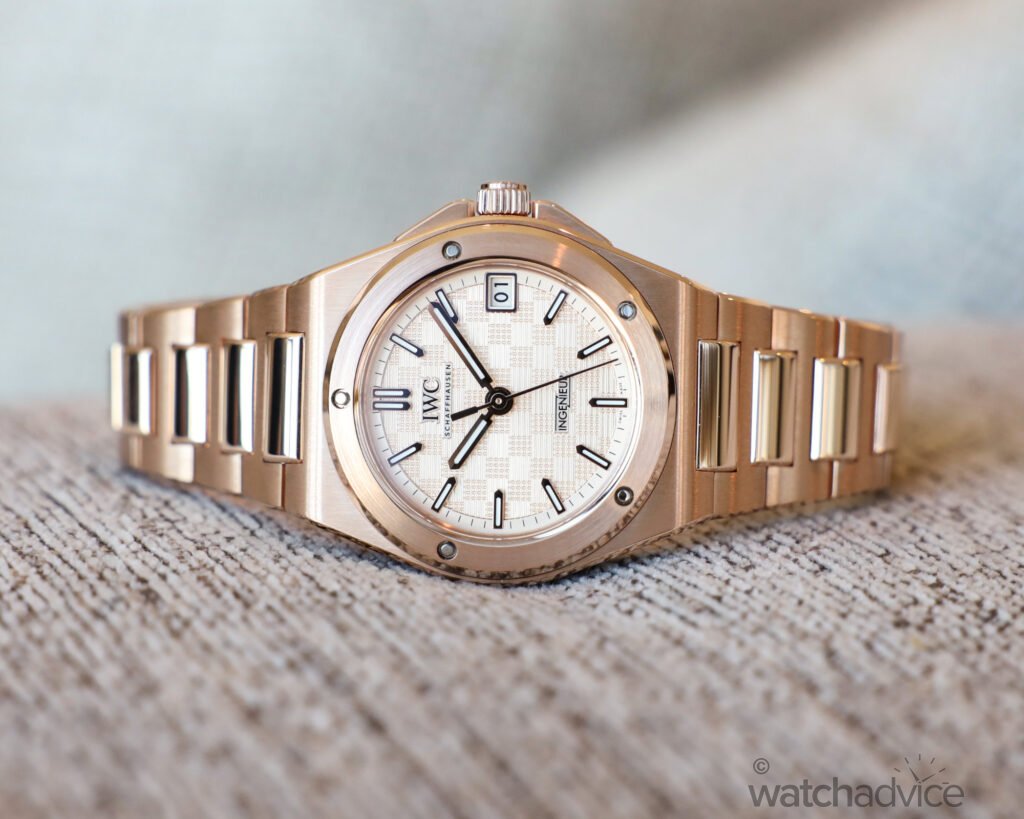
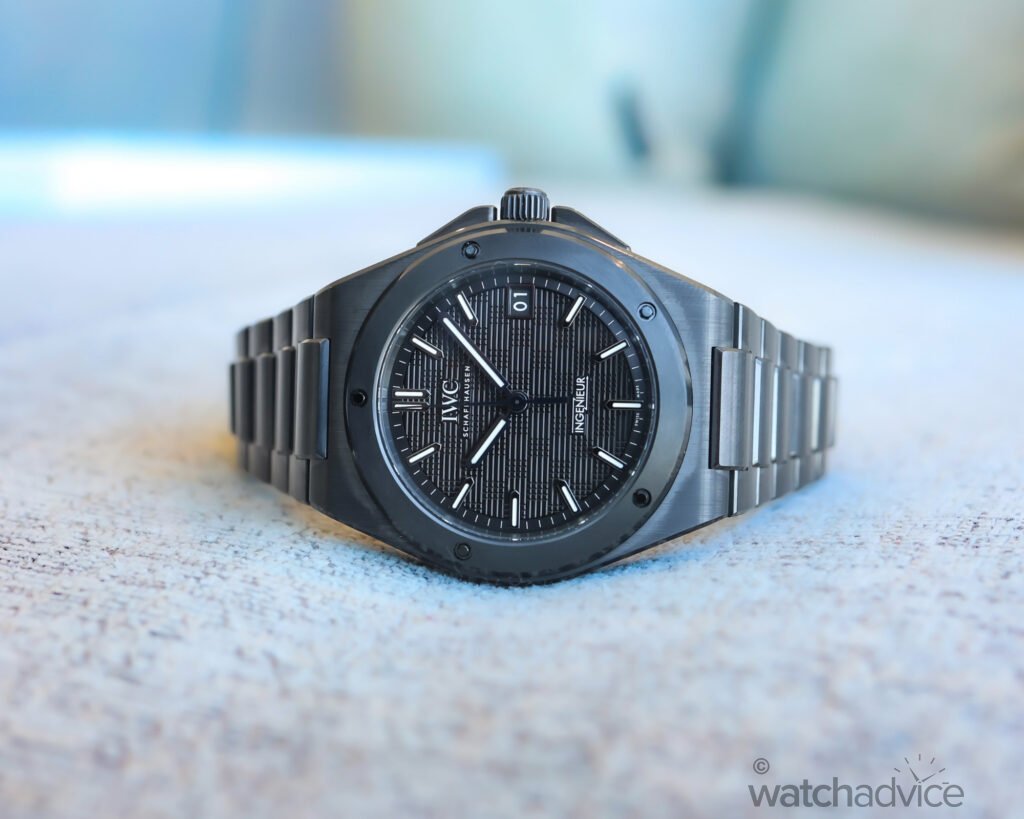
“Now, having seen how well this purified version of the Ingenieur has done, that then allows us the confidence to say, okay, let’s build a line on that! We have the base design that we’re happy with, and the way we’ve gone about it now is, that the Ingenieur collection is the least compromised line when I approached it from a design perspective. Maybe the ceramic is the best example of this.”
What Chris says here is an interesting point. When watch brands look to extend a collection from the base, quite often what happens is the different versions of the watch may look very similar, but through the design process, elements of the design need to be compromised to achieve the size, look, movement complications, materials, etc. IWC has been very careful not to do this with the Ingenieur collection, and as Chris mentions, the Ceramic was probably one of the hardest pieces to do this with.
An Engineering Problem
IWC is a watch brand that is built on engineering and design, and as such, when Chris and the team at IWC looked to broaden out the Ingenieur collection, the aforementioned issues presented a unique opportunity for them. How could they stay as close to 100% true to the design elements and dimensions of the Ingenieur 40mm, but do it in new sizes and materials that won’t just let you increase or decrease the proportions on paper to fit the new models?
“The process we’re using is really about designing from the outside in, and we don’t normally work like that. As an example, when you do something in ceramic, you would always start from the fact that ceramic is asking for slightly bulkier dimensions – everything has to be beefed up a little bit to suit the material you’re working with. Often when you look at ceramic, the tolerances, and the gaps between bracelet links are a lot wider, so everything can move very freely, but it all feels a bit sort of loose and non-engineered in the hand, right? This is what we didn’t want to do. We didn’t want to mess with the proportions, so we started from the end result – this is the proportion: 42 millimetres with the calibre 82110, this is how we wanted to wear.”
This type of thinking isn’t the natural way of doing things, and when it came to designing the 42mm Ceramic Ingenieur, there were a lot of obstacles that needed to be overcome, which Chris explains…
“It’s a lot longer process, but it worked out beautifully because by going into pure ceramic construction, no container, and really minimising the construction tolerances on all fronts, you have to imagine: you’ve got five functional screws from the front, five functional screws from the back, which have to go into the same bit of ceramic at the centre and all miss each other, and give you 100-meter waterproofing, and make the watch stable. So they’re all huge challenges!”
He elaborates even further on the challenges of the 42mm Ceramic Ingenieur…
“Even working on the bracelet was a challenge. To bring that into the tolerances of the steel bracelet and to make sure it doesn’t crack, make sure it all wears perfectly, it’s a longer process. The finishing, as well, we pushed that to the absolute limit by brushing the entire case and all the components, then sandblasting them and doing the bevel polish on the axes on it. This was really next level in terms of what our engineers can do. But, in the end, you have a result that totally wears like an Ingenieur.”
The other fact that Chris reiterates to us is his strong drive to not mess with the Ingenieur no matter what, telling his colleagues that the watch needs to keep the same form and proportions of the design. It’s not a case of trying to retrofit the case to a movement or vice versa. “No matter what we want to do, if it’s not working out, we’re not losing it. If it’s working great. It has to be an Ingenieur and it has to be in proportion. We’re not going to mess with that for the sake of having this or that function in it”
Trial And Error
One question that was burning for me was the whole design process from start to finish. We’ve seen many brands and talked to them over the years about how they bring their designs to life, but with IWC being much more focused on the way the watches are crafted and created from an engineering standpoint, along with Chris’s background in architectural design, we’re keen to understand their process. How does the watch go from a basic concept to the piece you can purchase in-store today?
“So, of course, it starts with a very simple idea. Let’s make it, let’s say, ceramic as we’ve spoken about that. That’s literally how it starts. My background is in architectural and interior design, which are types of design work where you can computer-visualise the end result to absolute perfection. So an environment like this, we can render and we can decide on screen what the product looks like, and what is delivered and built here is 99 to 100% exactly what appears in the first rendering. So, the control over the execution is crazy good nowadays in this type of design work.”
“However, watchmaking works completely differently. A watch rendering is absolutely hopeless. That’s why the good renderings that you see of our watches on screen are always made after we create the finished watches; they’re rendered back. The reason for this is the actual visual effect of the watch cannot be computer-generated at all, and I had to learn in the beginning the very hard way that you have to A) work so far in advance, and B) you have to really leave the rendering very quickly and go into prototyping and go into the actual material.”
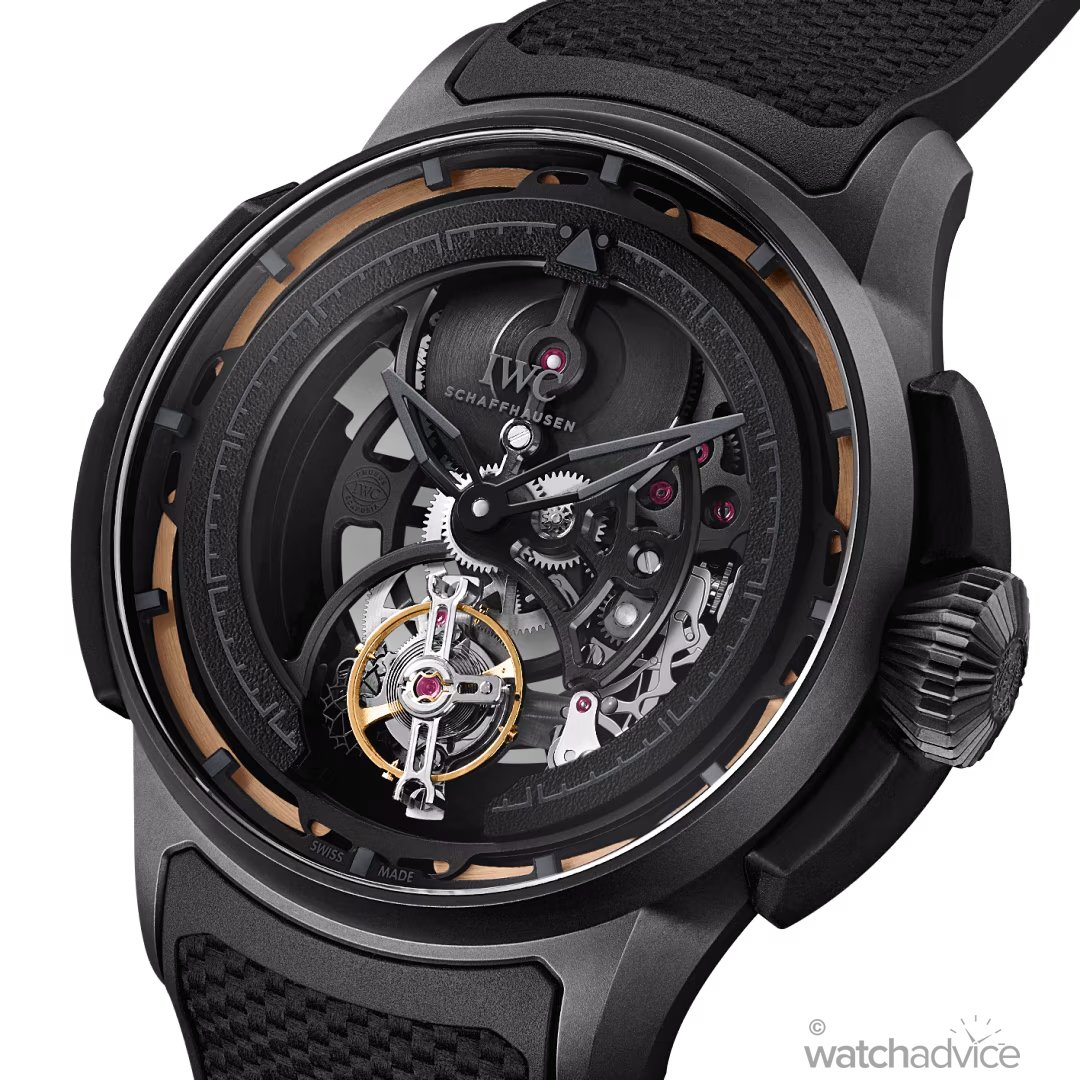
From what I’ve experienced at other Manufactures, this is slightly different, as in most cases, watch renders are then turned into 3D-printed models in physical form to check the look, style, sizing, etc. However, from what Chris tells us, IWC likes to enter into the actual prototyping stage much more quickly. And this makes sense as watches are a very tactile product.
“So nowadays, when we have, for example, a new dimension of an Ingenieur that we want to do, we’d look at what it is going to be, maybe 41, 42, 43mm, whatever it may be, and we then go into rapid prototyping. We do this very quickly just to check volumetric proportions and to see the height, look and feel on the wrist. We work with printed dials in spray-painted rapid prototyping, and that gives us an idea of dimensions, but nothing more than that. After that, the long, hard waiting bit starts, because then, we’ll make it in the actual material and we make the dials as well, as the dials are a massive part of the watch.”
And this is where trial and error comes into play for Chris and the wider design team at IWC. Testing what may look good and feel good in theory, and putting it into practice to see how it all stacks up. Using the ceramic IWC again as an example:
“With the first ceramic case we made, it was basically shining like polished plastic because the brushing really brings out the light, which is okay in the dark, but, if you take that into daylight, it was like, whoa! Discotheque, right? And we can’t do that. On top of that, you often get dials that then appear too grey, too dark, too shiny, too matte, and it’s always the interplay between how matte is this, how shiny is this screw, how matte is that? You see here on this one (looking at the new 42mm ceramic Ingenieur), for example, that the indexes are actually highly polished, whereas the dial is sort of in between, the screws are really quite shiny, but the bezel is sort of in between. Then there are matte bits and polished bits, and it’s the overall end result that gives your eye and your heart the feeling of what the watch will ultimately convey. It is just loops of loops of loops of prototype iterations and dial variations.”
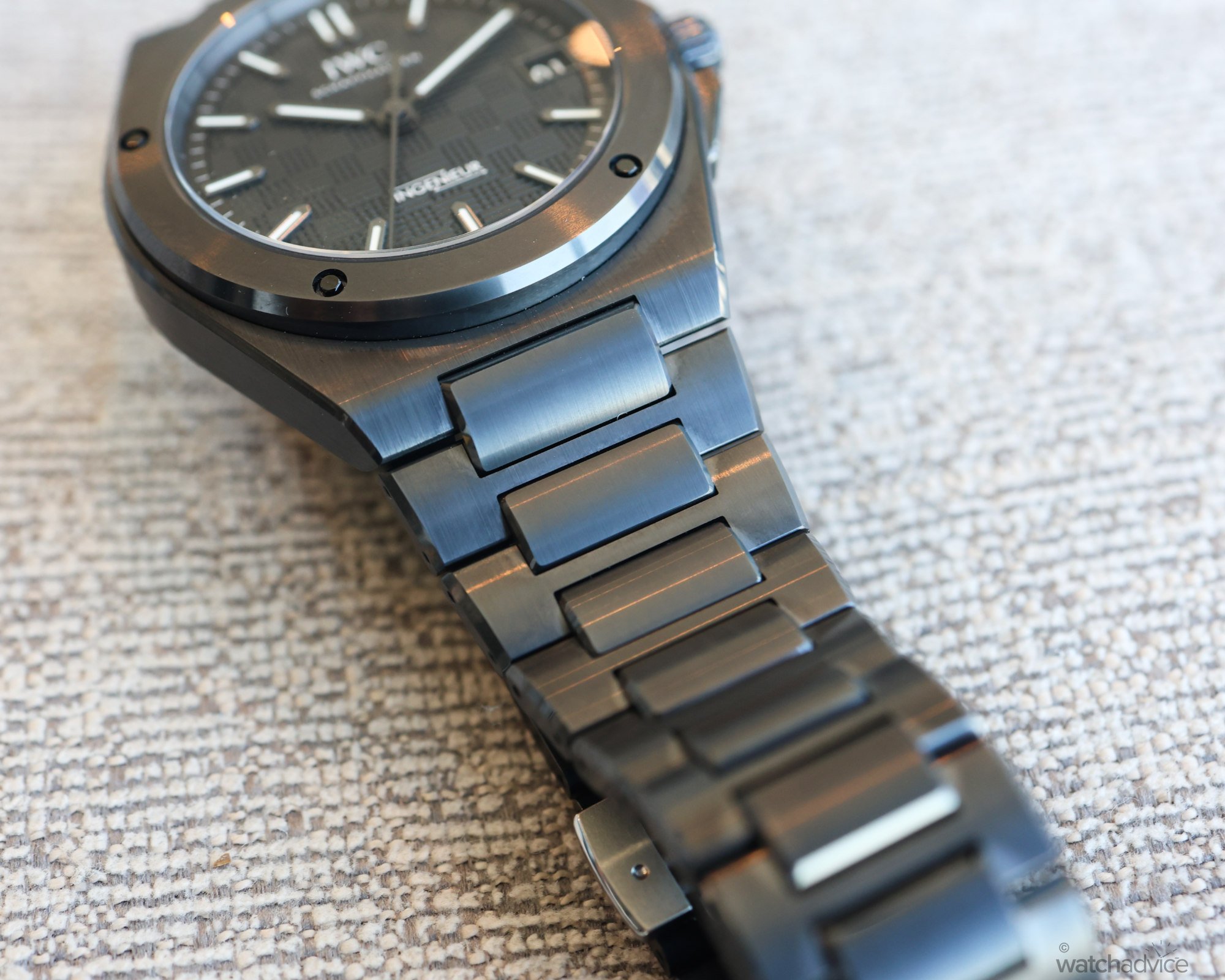
The other interesting piece of the puzzle Chris talks about is the dial. We all know that a dial can make or break a watch. We’ve heard so many times with new releases – “I wish they hadn’t done the dial in that colour, or style, or layout!” Clearly, those watches are not IWC, as this is one area where Chris and the team at IWC put a lot of emphasis and energy on.
“Talking about the dials, the Ingenieur Perpetual Calendar was one of those classic examples. The first two dials that we had on this were a complete and utter disappointment to the point where I was really close to saying just forget it, we’re not doing it. And only when the shine you get from the sub counters hit the right level versus the shine in the Tapisserie dial versus the case, suddenly the watch started popping without looking like a Christmas tree, and then it worked!
“But there are times in the process when you really think it is not going to work out. It just looks blah (he laughs at this statement), and my mood swings sort of go with that process – Sometimes we have design meetings and something comes to the table and I have a skip in my step for the rest of the day, I’m super excited and then other times you walk out and the world’s just ended. But that’s the highs and lows of this work, I guess!”
Tech & Innovation Don’t Always Make It Easy
Much of modern watchmaking, like any product that needs to be designed and then made these days is done with the aid of computers and automation. But you also still need the humans to create the designs and concepts as well as finish the parts and assemble the watches. It is a fusion of science and art, man and machine. Because of this, you often wonder if making watches in 2025 is easier than it was in 1925, or going further back, 1825. The help of rendering, 3D printing, CAD, automated milling machines etc should make it more efficient and easy, right? Maybe not…
“Well, I think there are a couple of elements there. I think, yes, technically, some things have become easier and quality has much improved of course, but also, I think in line with the possibilities, customers’ expectations have risen exponentially. When you look at the original pawl lever watches from the 1880s, they have an imprecision of about 15 minutes a day. It was a great innovation at the time, but fast forward 100 years or so, and this really isn’t acceptable anymore. A lot of the daintier watches you see from the 1960s and 1970s, I mean, by today’s standard, no customer would accept that in-store. So here, you also have a completely different sense of expectation. As a result, I don’t think that the design elements and the innovation elements of it are getting easier. It’s such a competitive industry and so much has been done and achieved, so to keep pushing the envelope, to really bring groundbreaking innovations, I don’t think that’s become particularly easier.”
When it comes to the physical watchmaking, it’s true that some of the technical tools have improved, as have the processes and technology that surround it all. It makes some things a lot easier, we agree. But as Chis mentions, you still have to put a lot of effort into the creative design process, the movement innovation and with this, communications to potential customers. Gone are the days when the selling point on a watch was its 1st place at the 1952 Chronometry Trials, and as such, it is one of the most accurate watches on the market. Back then, it was (almost) that simple. Today, the landscape has changed so much.
Lights, Camera, Action!
We can’t talk to Chris without talking about F1® The Movie. The whole theme of IWC’s booth this year at Watches & Wonders is this. Amongst the cafe and bar at one end, the watches are showcased intermittently throughout, and the lounges and meeting tables at the other end are some of the props from the movie, starring Brad Pitt as washed-up race car driver Sonny Hayes, and Damson Idris, who plays a young hotshot F1® Driver, Joshua Pierce. If you haven’t seen it yet, do yourself a favour and get along to see it. There is a smoking wreck of one of the cars, a full prop version in its APXGP team livery and some Mercedes-Benz camera cars with rigging. It’s a cool theme and really hammers home IWC’s association with not only the new movie but also the real-life Mercedes-AMG Petronas Formula 1 team. So, what was the whole Hollywood experience like, and how did it all come about?
“Well, we knew the producers, obviously Jerry Bruckheimer, the director Joe Kozinski, very well from Top Gun: Maverick. It was quite early, towards the end of filming Top Gun: Maverick, that Jerry’s team said to us: We’re probably going to do a racing movie, and it might actually be embedded in Formula One. Are you interested? I mean, they didn’t really have to ask as they knew we were interested! Because of this, it was never a discussion of whether or not, it was always a discussion of how it was going to come together and who was going to do what. And then all the pieces fell into place. Mercedes said they were going to provide the cars: Mercedes AMG was getting involved, Mercedes Benz was getting involved, and Lewis Hamilton as a producer.”
Like all things in life, it is about timing, luck, who you know and spotting an opportunity, plus a whole lot of work in between. For this movie, IWC seemed to be destined to be involved heavily, thanks to the close synergies that formed with the real Mercedes-AMG Petronas F1® team.
“I think one of the very first research meetings that the team, including Brad Pitt did, was with Mercedes in Brackley, meeting Toto (Toto Wolff, CEO & Co-Owner of the Mercedes-AMG F1® Team) and sort of scripting out. So you see, the team boss played by Javier Bardem in the movie is really modelled on the research they’ve done on Toto. Joshua Pierce (Damson Idris’s character) in the movie really modelled on a younger Lewis Hamilton. Kerry Condon, who plays the Chief Engineer, is really modelled on the Chief Engineer at Mercedes and the team and the other ladies there. Also, a lot of Mercedes sponsors were going across into the fictional APXGP team – Tommy Hilfiger, MSCEA sports, and all Mercedes-associated. So you could really see how this was quite close to the world of the Mercedes, and it just made a tonne of sense.”
When you make movies, and you’re the watch partner of both a real and fictitious F1® team, they need watches to wear. Many of these are the pieces that we have seen released this year, like the 5N gold Pilot’s Performance Chronograph, which Damson Idris wears in the movie. With many of these pieces not fully finished, and also under embargo, we were keen to understand how this worked between IWC and the studio.
“We provided close to a hundred watches, quite early on, and the challenge for us, as always, is that they need watches to shoot, ones that we don’t launch another two years, so to bring these prototypes together, so you see always the dummies for the movie, they’re all a bit rough. But, they have to be done, you know, they usually give us in some cases ten days’ notice to produce a hundred watches, which is always fun! Outside of this, we had to work on the storyline, read the script, understand how they’re going to be woven in, negotiate the branding, where do the IWC logos go, and what are the colours? Actually, we were super lucky that they didn’t end up with a lime green car or something but went with a very nice black and gold John Player special-inspired livery, and then it kind of all fell into place.”
And it wasn’t just the watches in the movie. Chris makes a small cameo playing himself and recounts what this experience was like to be on set and working with some of the best in the business when it comes to movies.
“Last year, I was on set for a whole afternoon while they were filming in Abu Dhabi. The whole experience was just insane. I mean, the fact that you cannot tell where the movie set stops and real F1® starts is just mind-blowing. Just to give you a flavour of that, when I arrived, I had this walk-on scene where I was walking with actors like Tobias Menzies and a few others portraying sponsor CEOs and investors. After the first take, one of them asked me, “So what do you normally do? Are you on TV? Are you in streaming, are you in movies?” I told her I was the actual CEO of IWC. She also complimented me on what I was wearing, saying “Great costume by the way,” I laughed and said it was just what I wear, I’m not dressed in anything in particular, for this take. It’s just authentic, right? But they (the actors) also look completely convincing, like any CEO visiting the Formula 1 paddock, you could not tell the difference. All the hostesses, everyone looked 100% authentic, even to the point that after a couple of hours of shooting, I went across to one of the hospitality bars and asked for a water, and the guy just looked at me and said; I’m an actor, this is a prop, it’s not a bar!”
Interestingly, Chris, at the helm of IWC and having 10 years of experience with their association with Formula 1® couldn’t even tell what was real and what wasn’t. It also gave him a lot of respect for background actors, as what they do all day is to be in the background and stand around all day – start, stop, start, stop, start, stop in the heat, rain, cold, whatever the conditions. Movie sets aside, we turn our attention back to the watches, and in particular, the stunning green dial Ingenieur that was released, limited to 1000 pieces and inspired by one of the Ingenieurs in the movie.
Genta’s Most Brilliant Failure
But before we get to that, let’s quickly take a step back to understand the Ingenieur and its beginnings with Gerald Genta as a bit of a reference point. It’s an interesting fact that while many of us in the watch world revere the great Gerald Genta and his creations, the Ingenieur now counted as one of these iconic pieces (along with the AP Royal Oak and the Patek Philippe Nautilus), the Ingenieur had some tough beginnings, to the point where IWC calls it, their most brilliant failure. This is the subject of a short 4-minute film IWC has produced about this watch, which we previewed prior to our talk with Chris. To save you searching, we have it below. Enjoy!
Chris comments on this – “As you saw in the movie, it was our most brilliant failure. It was launched and sort of disappeared off the radar again, and then got reintroduced when the zeitgeist picked it up again in the 2000s. And, that is the crazy thing, that original 1832 Gerald Genta Ingenieur sold less than 600 pieces over a six-year period, it’s nuts!”
So safe to say that if you find an original Ingenieur SL 1832 in the wild, you know you’re looking at a rare piece. So how does this fit in with the new green dial Ingenieur and Brad Pitt’s character, Sonny Hayes, in the upcoming movie? Interestingly, as you saw in the above short film, the Ingenieur was designed for engineers and those who had professions that required the robustness of the watch, such as race car drivers. So it seemed fitting that Brad Pitt’s character would have a vintage one on his wrist. But this was not a prop watch; it was the real deal that Brad was wearing, albeit a slightly altered version of an original reference 1832. Given there were only 598 pieces ever made, this was a big deal!
“When we converted two for Brad for the movie, there were a few people in our archives, our curators and collectors, and such said, “HOW COULD YOU?” I said, well, this story is good enough to modify these. I. You’ll appreciate that 50 years down the line. Maybe not now, but you will. And now there are two less.”
We all have to have a small chuckle about this. Funnily enough, Brad still has both these watches, which is unusual, but I think in this instance, Chris, IWC and we as watch lovers will be ok with it. And from this altered original 1832 reference, which received a green dial and gold letters, IWC created the modern version, with a beautiful green grid dial and gold hands and indices, which we’ve adopted as an Australian version, but has been nicknamed “The Sonny” by others. Admittedly, I found this to be my favourite Ingenieur of all the releases. It is such a great-looking piece in person.
A Bientô, Bis Später, See You Again!
While we spoke a lot about IWC, the Ingenieur releases and F1® The Movie, we also got an insight into who Chris Grainger-Herr is as a person, CEO and overall watch lover, which he is. At one point in the conversation, we touched on how watches make us feel, and the crazy things that go through our heads as watch lovers and enthusiasts, and it seems he does the exact same thing. Thoughts like, “What watch am I going to wear today to match this outfit? How am I feeling and what is speaking to me today?” and my favourite, which I do, “What pieces am I taking on my holidays, and what scenarios will I be in with what piece on my wrist?” Come on, admit it, we’ve all been there. And so has Chris, evidently, as he agrees with my thinking.
“Exactly! I have this very weird association with holiday watches” (So do we all don’t we? I do, in fact, I have a holiday coming up and I’m already running this thought process through my mind!) “What I visualise in my mind is you have breakfast in the morning and there is this beautiful custom made avocado toast at this avocado toast station, and there’s a few people queuing up, and then depending on what of sort of watch you’re wearing when you come reach for that plate, you feel a certain way and get a certain confidence in that. I’m always wondering about avocado toast and what sort of watch would work in that scenario, and I think something like the Ingenieur Automatic 40 in gold was definitely avocado toast inspired!”
He says with a warmth and a sense of humour, almost jesting as we can relate, and we all have a laugh at that, as both Chamath and I are very much guilty of this! Joking and holiday fantasising aside, what Chris says next in a more serious way strikes a chord with us. We all know watches are not just for telling the time anymore. They are much more than this, and for everyone out there, they may have slightly different meanings. Chris kind of sums this up well in his words, and this gives us, and hopefully, you who are reading this, how he sees watches and specifically, the watches IWC makes. They are designed for you, the wearer and not for those onlookers. They are about how the watch makes you feel, and no one else. Which is how it should be…
“You don’t feel the same every single day either, and you have different shades of confidence in yourself as well. I often think that’s why the Portugieser Perpetual Calendar is such a beautiful watch, because if you’re feeling a bit low, if you are feeling a bit insecure or nervous about what the day will bring, you know if you put on a Portugieser Perpetual Calendar it just lifts you. It’s like part of your self-confidence armour.”
“Really, for me, the difference between an IWC and something else is that this is not to show to others that you’re the man or you’re the lady, but for yourself. The Ingenieur dials were designed to work at this distance, looking at your watch yourself, not three meters across the table. Other brands are designed to be recognised across a table or at a distance, whereas when you look at the Perpetual Calendar, for example, from a distance of three or four meters, you’re not even going to see that it has subdials on it. So we design everything to be effective for you as the wearer, but not necessarily for everybody else. That’s why, also when you talk about confidence, it’s not a confidence derived from everybody else going, “whoa, what is he wearing?”, but it’s derived from this feeling it gives you when you put it on. That’s how I look at it.” We say Amen to that!
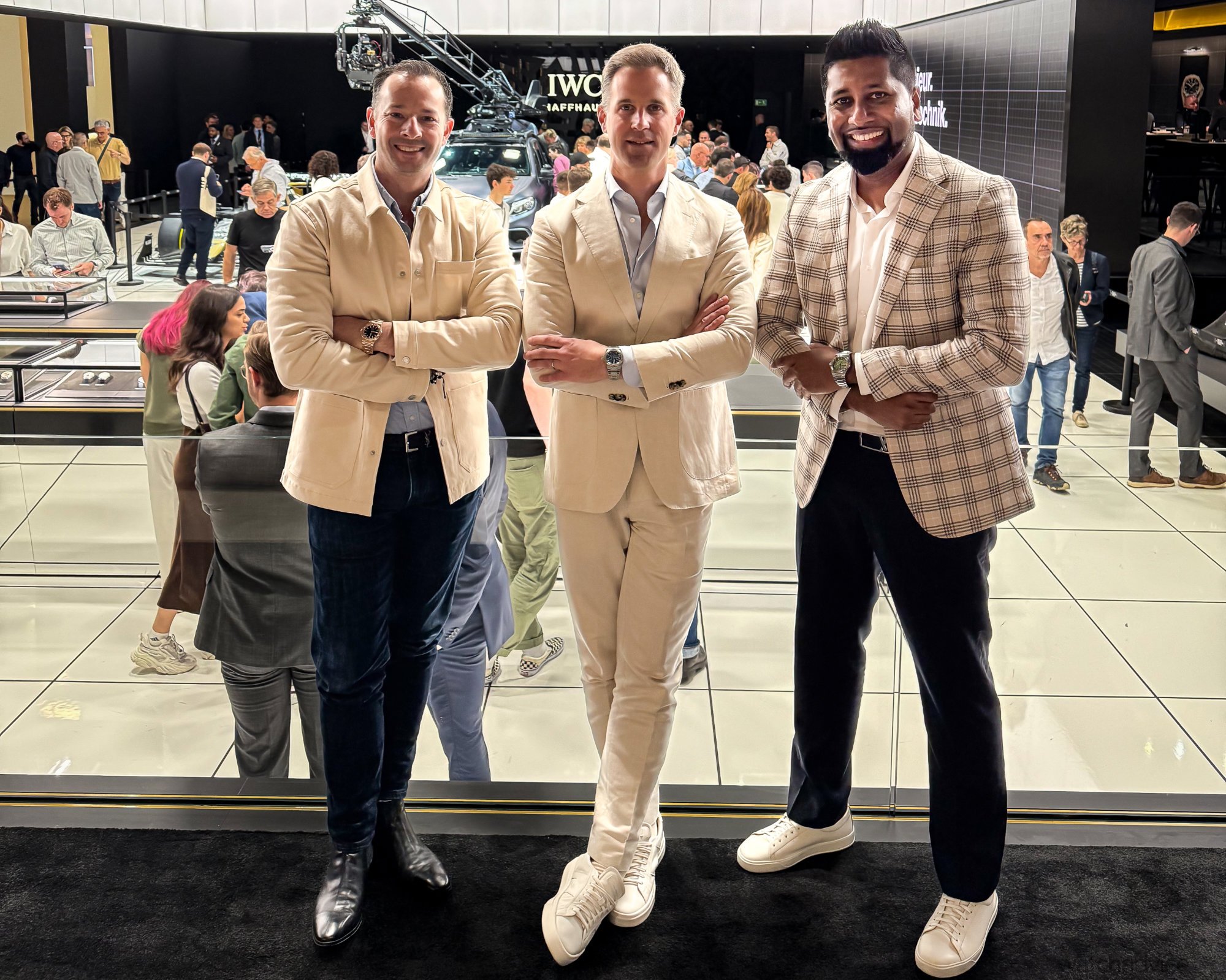
As our conversation comes to a close, we feel that we could have kept talking for hours about watches, designs, the industry, IWC, F1®, and the list goes on. However, Chris has business to attend to, and we have more appointments to get to, so unfortunately, we need to wrap it up. Chris does talk to us for a little bit longer after we have switched the microphone off – about the fair and the fact that the barista in the IWC booth has made a record number of coffees and other things that you think of when you’re just shooting the breeze with a colleague or friend. And this is how Chris makes you feel talking to him, like you’re meeting for the tenth time, not the first.


